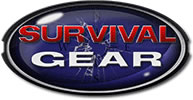Disaster Survival Supplies
"Proper prior planning prevents poor performance" is a catch phrase I first heard a lifetime ago in the corporate sector. At the time, I passed it off as yet another catchy, feel-good sentiment to make us work smarter, not harder. As it turns out, this is one of the few lessons learned in cubicle land that is applicable out in the real world. Planning ahead and stockpiling disaster survival supplies is a key element in any overall emergency preparedness program.
Disaster Survival Supplies
Various disaster relief organizations have made several recommendations as to what disaster survival supplies the individual and family should have on hand in the home. Generally, these experts suggest having enough food, water, and other supplies to last at least a few day, preferably a week or two. This is the estimated amount of time they believe it will take to re-establish order in the aftermath of a disaster. However, as we saw after Hurricanes Rita and Katrina, it could take much longer.
The basic needs to be met by your disaster survival supplies are food, water, first aid, communication, and hygiene.
Your emergency food should be non-perishable and ready to eat without the need for much preparation. Canned tuna with crackers, peanut butter with crackers, dried fruits and nuts, granola bars, and/or protein bars are all good choices. Granted, the possibility exists that, depending on the nature of the disaster, you may be able to utilize propane or charcoal grills, even campfires, as means to cook but don't plan on that. If it becomes an option, great, that expands your choices quite a bit.
Water is relatively easy to store, but you should set aside quite a bit of it. The talking heads all suggest one US gallon of water per person, per day. Honestly, that isn't a whole lot. Just enough to keep you hydrated, brush your teeth, and scrub a bit of the stink off your body. Doubling that figure is at least a bit more realistic. Don't use old milk jugs for storing water. They are not designed for long-term storage and will eventually develop leaks. Better to use old 2L pop bottles. Best is to use containers specifically designed for long-term water storage. Treat all stored water with a few drops of chlorinated, non-scented bleach and rotate it every six months. By "rotate," I mean use the stored water for your plants and pets and refill the containers with fresh.
I highly suggest you take at least a beginner's course in first aid through the Red Cross or other training outlet. The pre-made first aid kits you can buy at discount retailers across the country are great as a starting point. Be sure to include the over the counter remedies you prefer for pain relief, nausea, and allergies.
Having the ability to communicate is crucial. You'll want a crank powered radio capable of receiving shortwave as well as weather broadcasts. This will help keep you informed of the latest developments with the crisis. A land line phone will work as long as the phone lines are intact, even if the power is off. Cell phone reception could end up spotty at best.
If you don't have running water, then you won't have flush toilets. You'll need a place to go when you have to, um, go. A five gallon pail can serve that purpose well and, in fact, there are specially made toilet seats that can be attached to them. Kitty litter can be placed in the bucket to help absorb liquid and baking soda can help cut down the smell.
When you empty the bucket, do so into a hole you've dug well away from any potential water sources. Don't forget to stock up on toilet paper as well as feminine hygiene products.
Having planned ahead and set aside disaster survival supplies will help reduce the possibility of poor performance on your part during a crisis.
